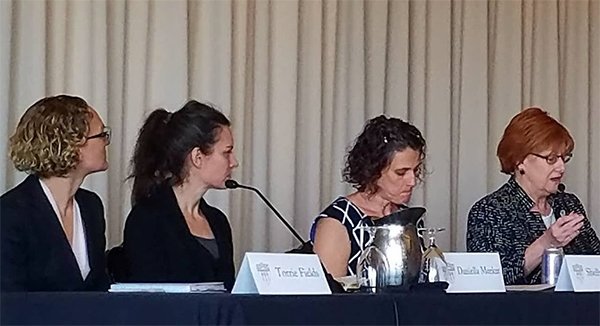By Melanie Marshall
SACRAMENTO—California has made considerable progress in improving care for seriously ill patients and families, but much more must be done to meet the needs of our rapidly aging population, said healthcare providers, educators and advocates during a policy summit this week hosted by the USC Schaeffer Center for Health Policy & Economics.
The most pressing challenges, summit participants said, include educating and growing the palliative care workforce to meet increasing demand; aligning models of care delivery and payment; improving clinician and patient understanding about palliative care; expanding the evidence base through new research; and addressing social determinants and the complex needs of vulnerable patient populations who disproportionately impact healthcare costs.

Speakers at the event, held in the state capital, included public officials like Jennifer Kent, Director of the California Department of Health Care Services; industry leaders like Puneet Singh, Chief Development Officer at Aspire Health; clinicians like Shelly Garone, MD, the Regional Medical Lead of Palliative Care Services at Kaiser Permanente Northern California; and educators like Jennifer Moore Ballentine, Executive Director of the California State University Shiley Institute for Palliative Care.
Vital Need to Grow Palliative Workforce
Regarding workforce needs, Ballentine said there’s now roughly one palliative care physician per 1,700 patients living with life-threatening illness (1 per 20,000 living with severe chronic illness), and the gap will only widen in the coming years. That shortfall underscores the need for all clinicians—not just palliative specialists—to learn to deliver basic palliative care that can ease suffering for seriously ill patients and families.
“Over the past 10 years one of the constant themes from the palliative care specialty field has been ‘we’ve got to get the generalists trained,’” Ballentine said. “Primary care physicians are actually doing palliative care a good amount of the time whether they call it that or not, and there’s an opportunity to hone those skills like prognostication, advance care planning conversations, managing pain, etc.”
She noted the Institute has developed a new curriculum specifically for primary care providers, but said hurdles remain in helping them understand how palliative care can enhance their practice.
Garone also noted the time challenges facing primary care providers and the need for healthcare systems to examine how team members from across the organization can play a role in supporting seriously ill patients. also noted the time challenges facing primary care providers and the need for healthcare systems to examine how team members from across the organization can play a role in supporting seriously ill patients.
Costs and Care
The summit also touched on the need for new payment models. The American Academy of Hospice and Palliative Medicine (AAHPM) and the Coalition to Transform Advanced Care (C-TAC) have submitted separate but similar proposals to the US Department of Health and Human Services that call for per-member-per-month payment models, but there’s no timeline on when or if HHS will act on those ideas.
Speakers noted that while studies show palliative care can save payers money by reducing hospitalization and improving patient satisfaction and outcomes, the latter must be the primary focus. Even if palliative care was more expensive, healthcare systems should provide it because it’s the best care possible, said Joe Rotella, Chief Medical Officer for AAHPM.
Addressing Needs of Complex Patients
Kent, the DHCS chief, gave an interesting overview of the state’s Medi-Cal program, noting that 1% of the state’s Medicaid patient population generates roughly 64% of the spending. More than 59% of those “super-utilizers” suffer from uncontrolled mental illness, often in combination with serious physical illness.
Kent said the state is addressing social determinants of health through its “whole person care” initiative, funneling $1 billion into community-based services and more mental health services to address these needs.
Key Strides in California
Strides in expanding palliative care were also highlighted, including the passage of SB-1004, a 2016 law that took effect this year requiring Medi-Cal managed care plans to provide palliative services to eligible patients.
Torrie Fields, Senior Program Manager for Blue Shield of California, also discussed the rollout of her company’s groundbreaking palliative care benefit, available to roughly 4 million members across the state.
A recording of the summit, “Will California Be Ready? Implementing Programs for Serious Illness: A Policy Discussion on Care and Coverage Approaches,” is available here at the Schaeffer Center’s Facebook Page.




